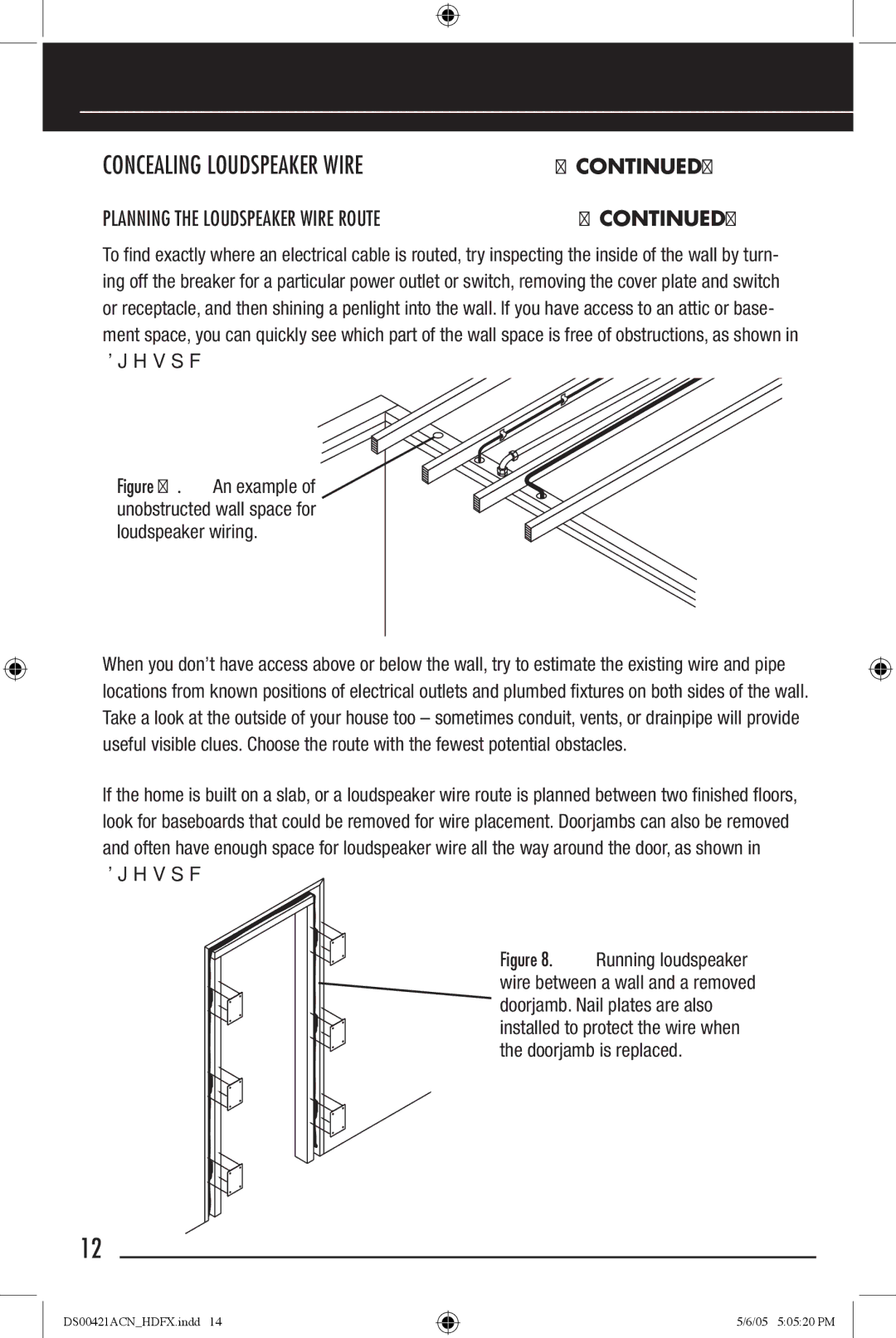
CONCEALING LOUDSPEAKER WIRE (CONTINUED)
PLANNING THE LOUDSPEAKER WIRE ROUTE (CONTINUED)
To find exactly where an electrical cable is routed, try inspecting the inside of the wall by turn- ing off the breaker for a particular power outlet or switch, removing the cover plate and switch or receptacle, and then shining a penlight into the wall. If you have access to an attic or base- ment space, you can quickly see which part of the wall space is free of obstructions, as shown in Figure 7.
Figure 7. An example of  unobstructed wall space for loudspeaker wiring.
unobstructed wall space for loudspeaker wiring.
When you don’t have access above or below the wall, try to estimate the existing wire and pipe locations from known positions of electrical outlets and plumbed fixtures on both sides of the wall. Take a look at the outside of your house too – sometimes conduit, vents, or drainpipe will provide useful visible clues. Choose the route with the fewest potential obstacles.
If the home is built on a slab, or a loudspeaker wire route is planned between two finished floors, look for baseboards that could be removed for wire placement. Doorjambs can also be removed and often have enough space for loudspeaker wire all the way around the door, as shown in Figure 8.
Figure 8. Running loudspeaker wire between a wall and a removed doorjamb. Nail plates are also installed to protect the wire when the doorjamb is replaced.
12
DS00421ACN_HDFX.indd 14
5/6/05 5:05:20 PM
